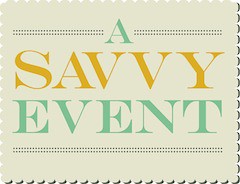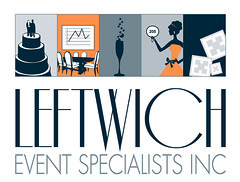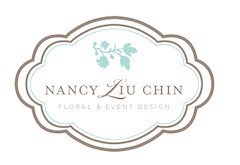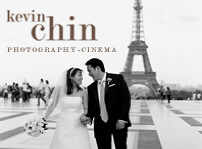__________________________________________
A week ago I bumped into a floral friend. As always we were talking shop. We were both at the end of our busy season so to say that we looked a little "beaten down" was an understatement. Both of us had dark circles under our eyes, hair a little out of place, and shoulders sagging from feeling weary about the season ahead. Both lacked sleep. Tired. Yulp.
After spending some time chatting, she mentioned that after 20+ years in the wedding floral business, she was struggling with paying the bills. And that she didn't have much to show for it. After seeing so many ups and downs, she said that this year was the worse.
If someone with her experience is still having trouble making ends meet after investing 20 years in this business, then what can we learn from this?
During these times, it's hard to feel bullish(confident and upbeat). Given that my background is finance, I often seem to have a "bear" mentality when it comes to business and consumer confidence though on a personal level, I think I'm more glass-half-full then the glass-half-empty type.
In business and when it comes to consumer confidence, I confess that I'm conservative and bearish all the way. (ps - the definition if you don't know of a bear investor or analyst is one that is "accompanied by widespread fear and pessimism" as defined by Wikipedia. ). And because I am bearish this is what I have to say to those who are thinking of starting a career as a floral designer or a florist. (or more simply put - anyone just going into business for yourself)
Save Save Save
Yes. When it comes to your business, you better know how to save. Save for a rainy day. Save your profits on a yearly basis for future expanse or for the growing opportunities. Save now for next year unexpected expenses or downward sales. Save for the unknown.
Many businesses especially floral and event designers, forget how to stay on budget, stick with a shopping list, and buy only what is needed. I totally understand when you are in your element of design that it is always so so so easy to buy more more more. Or when there's a great sell from your suppliers we get carried away. I say, "stop and evaluate". Do you really need it?
What I am saying is that you have to be good at saving. Learn to buy wisely. Learn what deals are worth while. Learn to save for upcoming projects. Does not mean you go cheap. No No No.
In well managed companies(small or big), cash flow is crucial. Especially during tough times, those companies who have strong cash flow can weather the downs.
For Richer, For Poorer
This piece of advice is for those who haven't started their business and are still on the fence. No matter what I say, I know many of you will jump right in but I'm going to say it anyway. If you are one of those that don't care about making good money, working long hours, waking up early, and being slaved to your work, then you don't need to read this section. However, what if you do care?
For those of you who would like to have a home one day and might need money to pay for the mortgage(or your credit card bills or your college loans or even a shoe collection), who want to have a life outside of their work, and who might care if they have to give up weekends. then read on.
I am sure that many people will bash me for saying this so hold on tight....Unless you are at the top top top of your game in your community, most floral designers do not make that much money in comparison to averages. Period.(Did I just burst your bubble? sorry!) (****The top of the market or top volume businesses are excluded from this conversation)
The profit margin is horrific. Horrific.
That's why after so many years, my dear floral friend was crying on my shoulder. She's having a hard time meeting her financial needs and feels that she doesn't have much to show for 20 years of work in this field. I feel that way too.
Why do so many floral designers gripe that they don't make much. It has to do with low profit margin and consumer's expectation of what is an acceptable margin. Planners don't get it. Editors don't get it. Venues don't get it. Consumers don't get it. As a floral designer, we've heard people moan, "wow - flowers are so expensive!". Sure, but that's because they are perishable, usually imported, rare things. Most flowers are not common commodities like oranges, beef, water, pork bellies that can be traded on the NYSE.
Let me continue.
Did you hear that Apple's last quarter profit margin was over 35%. Wall Street applauded this.
What does that mean in layman's term? A 35% gross margin on a $100 item from Apple, would equal a pre-tax profit of $35.00. Wall Street and most investor of Apple did applaud the company for managing their bottom line and thus the stock jumped on trading news.
However, when it comes to wedding flowers, most average consumers would probably question if a floral designer made $35.00 per every $100 of flowers ordered. I'll give you an example. If a boutonniere priced out at $20.00, a floral designer should make $7.00 - right? However, most consumers probably would feel that it is too much. Not all consumers but many. Why do I know this...because I've actually had many bride ask me why a single stem flower that should be worn on the lapel should be over $5.00. (That's another discussion which I am not suppose to talk about.)
For argument sake, let's look at this backwards from the cost perspective.
Let's price something out HOPING to achieve a 35% profit margin. Let's be simple about this and assume that you materials and supplies are 30% of all your costs. Your other fixed and operating expenses including a big component labor(****yes I understand that this doesn't take into account non operating expenses) is 35%. The total of materials and operating costs is 65%.
Once you buy just the materials for one arrangement(let's say for simplicity) a bridal bouquet, let's try to figure out what to price this item. In this example, I've used this lovely orange, fall bouquet.

Recipe and Costs
1 bunch of orange tulips at $9.00 a bunch
1 5 stem bunch of orange orchids at $10.00 a bunch
1 bunch of orange mini calla at $20.00 a bunch
1 stem of green cymbidium orchids at $22.00 a stem
1 bunch of orange Asiatic lilies at $9.50 a bunch
1 bunch of 50 cm deep orange roses at at $18.00 a bunch
1 stem of orange cymbidium orchids at $22.00
1 bolt of ribbon at $7.00 a roll for 10 yards
1 box of pins at $2.25 a box
1 1inch floral tape at $2.00 a roll
Are you ready for the costs? Total approx costs - $122*(remember this is SF so in your city, it might be more, it might be less). What retail will get you to a 35% profit after cost of materials/supplies plus fixed and operating expenses? How many times should you mark up the cost of the materials(not including the overhead) to achieve the profit margin that you want?
If you are asking me, I would say that you might want to price it at around $366.00 which is 3x the cost of MATERIALS(only) in order to achieve that profit margin, however, ask yourself this - what is the market expectation for this bridal bouquet? There is a different between what you want to charge and what a customer is willing to pay, right?
And thus our dilemna...
It is because some(not all) wedding markets cannot bear to afford a $366 bouquet before delivery and tax that so many floral designers have to either 1) lower their expected profit margin or 2) reduce expenses(in all areas - utilities, labor, materials, etc.....) if they want to price it out lower than $366. When floral designers including myself when I first started probably didn't know how to charge. Perhaps we just took the cost of their materials and mark it up 2x or 2.5 times marking.
If so, you might guess that after all those fixed and operating expenses like labor, rent, utilities, sales tax, trucking, liability insurance(and on and on), that a 15 to 20% overall profit margin might be what was achieved. (As for my own business, we average 25% on our EBIT which isn't good and isn't bad. There's always room for improvement and I'm working on that.)
What does this mean for a floral designer or new florist?
Well, if your End of Year gross profit margin is say 20%, you've done an estimated 40 weddings at $3000 per wedding with total sales equaling - $120,000. Your end of year gross before taxes might be----------
$24,000
As a well known photographer said to me, it's not that simple. Darn, right! It's not that simple there's so many accounting deductions and rules - frankly, I can't even get into it in this article nor do I want to.
Moving on....
Let's say you live in the Bay Area, this figure does fall below the average salary? According to Indeed.com, as of October 20, 2009, the average salary in the Bay Area is $85,000. It's no wonder since the average one bedroom rent is around $1839/month according to rentaldata.com. So if you make $24,000 per year, you could barely make rent.
Do you see where I am going? When an average bride spends $1000 per wedding flowers, if your profit margin is 20%, you make $200. If you spend 30 hours on that project including setup, phone calls, emails, etc, you make
$6.66 dollars an hour.
I once calculated how many hours I spend and it turns out that I work an average of 6 days a week, 46 weeks a year, totaling over 2700 per year. We do over 40 weddings per year plus I meet with 80+ client. The average wedding client gets 60 hours of my time(doesn't include my staff). So if a typically client spends around $4500 before tax and delivery and if my margin is 25%, then you could say that I make....
$22.50 an hour.
I'm sure you know what I'm getting at. This business is not for the faint of heart. 2700 hours a year. 60 hours per client. That's what it takes if you want to do above average, full customized weddings in which you service the client and write customized proposals.
If your community does not have the floral business that some areas like San Francisco has, you need to do more weddings at a lower average ticket, reduce your expenses, and you have to be able to get a higher margin if you want to stay in it for the long run.
Of course, money doesn't have to matter. But I'm not talking about making millions. I am talking about making a standard of living so that you can have a good quality of life. Before you jump in, ask yourself
Can your community support the type of business you want to run?
What do you have to do to make you stand out so that you can be innovate like an Apple so that your client will accept a 35% margin after all expenses?
Where do you have to cut expenses in order to reach an acceptable margin? What do you have to charge?
Your Worth Know your worth. If you've spent many years in this business, you know it's tough. If you are lucky like I am, you work with great vendors. You have a wonderful selection of fresh products. You have a great talent pool of resources and designers to choose from. You have wonderful clients who understand. Not many of us floral designers are remotely this lucky and fortunate.
Yet after it's all said and done, I kept thinking about my floral friend and I wonder, was it all worth it? 20 years and still being unable to pay the bills. Was it worth it?
And for me the answer is very simple. No matter what, there is much more to life. And as much as I love to do what I do, I know what's important to me. And I know that it isn't about the money. It's not even about the respect and admiration of your peers.
 It is good knowing that I just love creating beautiful weddings and working for myself. Yet, I know what my limits are. And I know that it takes sacrifice to be a success but no matter what no sacrifice is worth it if I don't have the things that are dear to me... my health, my hobbies(outside of flowers), my friendships, my family life, my time with Chin Chin(my baby dog),my alone time, and my hopes.
It is good knowing that I just love creating beautiful weddings and working for myself. Yet, I know what my limits are. And I know that it takes sacrifice to be a success but no matter what no sacrifice is worth it if I don't have the things that are dear to me... my health, my hobbies(outside of flowers), my friendships, my family life, my time with Chin Chin(my baby dog),my alone time, and my hopes.Bottom line: Know what you are worth. Stand for what you need to make. Weather the storms by being a good saver. Spend wisely. Cash is king.


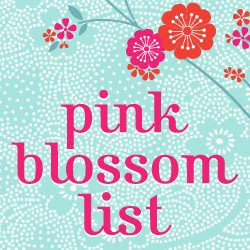.jpg)


